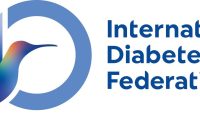Dyslexia is a learning difficulty that primarily affects how individuals process written information. Across the globe, countless children grapple with this challenge, finding themselves confronting barriers when engaging with tasks like reading, writing, and spelling. And while each case of dyslexia is unique in its presentation, common difficulties experienced by children with this condition include slow reading rates, the tendency to reverse letters and words, issues with phonological awareness, and others.
Fortunately, doing creative activities is one tried-and-tested way for children with dyslexia to navigate and eventually overcome these challenges. The benefits of pursuits that nurture creativity are twofold for such children. First, creative activities provide children with dyslexia with a therapeutic outlet they might use to tackle their learning difficulties. Secondly, these activities also pave the way for children to unlock new skills and capabilities. Overall, creativity can make traditional learning processes more engaging and effective, building bridges over the potential barriers that dyslexia erects.
Whether your child has just received a dyslexia assessment in Singapore or in any other part of the world, fostering their creativity will likely be a key step in helping them live healthily with their condition and unlock their full potential. Through the following activities, parents and teachers can introduce enjoyable learning experiences that intertwine fun with foundational skills:
Interactive Reading
Transforming reading into an interactive experience can shift it from being a source of frustration to one of joy for a child with dyslexia. Shared reading sessions, where parent and child take turns reading lines or passages, can make the process feel more like a team activity. Introducing aids such as highlighters or finger-tracking techniques can further demystify the world of words, offering visual or tactile assistance to guide the young reader’s journey.
Memory Games
Engaging children with dyslexia in memory games offers a delightful blend of fun and skill enhancement. Games like card matching or pattern creation challenge children to retain information and recall it, honing their working memory. Such games, while seemingly simple, provide pivotal support in strengthening their cognitive processing and pattern recognition. These activities also become a medium for creative expression as children start coming up with unique patterns or challenges for their opponents.
Rhyming Sessions
The unique sounds and structures of words can be confusing to children with dyslexia. However, when these words are presented as a rhythmic challenge, they can turn into exciting explorations. Rhyming sessions, where children are prompted to build rhymes around given words or sounds, can serve as helpful a platform for reinforcing phonological awareness and sound association.
Encouraging children to produce rhymes can make them more aware of the sounds within words, aiding in their reading and spelling endeavours. The playful nature of rhyme-building also reduces the stress of dealing with words and turn it into a captivating challenge. As children invent new rhymes, they not only expand their vocabulary but also get opportunities to exercise their linguistic creativity.
Tracing Activities
Fine motor skills, letter formation, and visual recognition are foundational aspects of early education, and tracing activities address all these areas. Providing children with dotted patterns, letters, or shapes to trace over is one way to subtly introduce them to the mechanics of writing. The act of tracing itself helps children become familiar with letter structures and their formation.
For children with dyslexia, this hands-on approach can often prove more effective than rote learning. Tracing reinforces the memory of how each letter is formed and also develops their hand-eye coordination in the process. Furthermore, as they progress and gain confidence, they can design intricate patterns or figures of their own, blending the realms of learning and creativity.
Mind Maps and Visual Organisers
Structured thinking can sometimes be a challenge for children with dyslexia. Mind maps and visual organisers provide an effective and creative solution to this issue. Visually laying out concepts, ideas, or tasks enables children to visualise the sequences and connections between ideas. The graphical nature of mind maps caters to their strengths, offering them a more intuitive way to organise their thoughts.
Creating these visual aids gives children the chance to be actively involved in the learning process, making it more personalised and meaningful. As they doodle, colour, and connect, they’re not merely studying; they’re crafting a visual representation of their understanding. Over time, this practice can lead to improved comprehension and retention, all while promoting their artistic and conceptual creativity.
Cooking and Baking
While cooking and baking might not immediately come to mind when thinking of educational activities, they offer a multitude of learning opportunities. Measuring ingredients and following the steps in a recipe allows children to hone their mathematical and sequencing skills in practical ways. The tactile and sensory-rich nature of cooking also provides more hands-on reinforcement for concepts like volume, weight, and time.
The sequential, precise nature of cooking and baking also helps children with dyslexia improve their logical thinking skills and attention to detail. These abilities, in turn, support improved reading and comprehension down the line. Furthermore, experimenting with flavours, textures, and presentations also allows them to express themselves creatively, making each dish a unique masterpiece.
Music and Rhythm Activities
For children with dyslexia, engaging in musical activities can be a game-changer for navigating auditory challenges. Tapping, clapping, or dancing to rhythms can significantly improve their attention span and their ability to process sound. Recognising patterns in beats and melodies can also sharpen their auditory memory, an essential skill when it comes to phonological awareness. Moreover, music encourages emotional expression, providing children with an alternative medium to convey their feelings and ideas—oftentimes even without the need for words.
With these activities in mind, it becomes evident that creativity is not just an outlet but a tool, a companion that aids children with dyslexia on their educational journey. Through imaginative play, structured thinking, and sensory experiences, children can transform challenges into opportunities, finding joy and growth in every endeavour.




